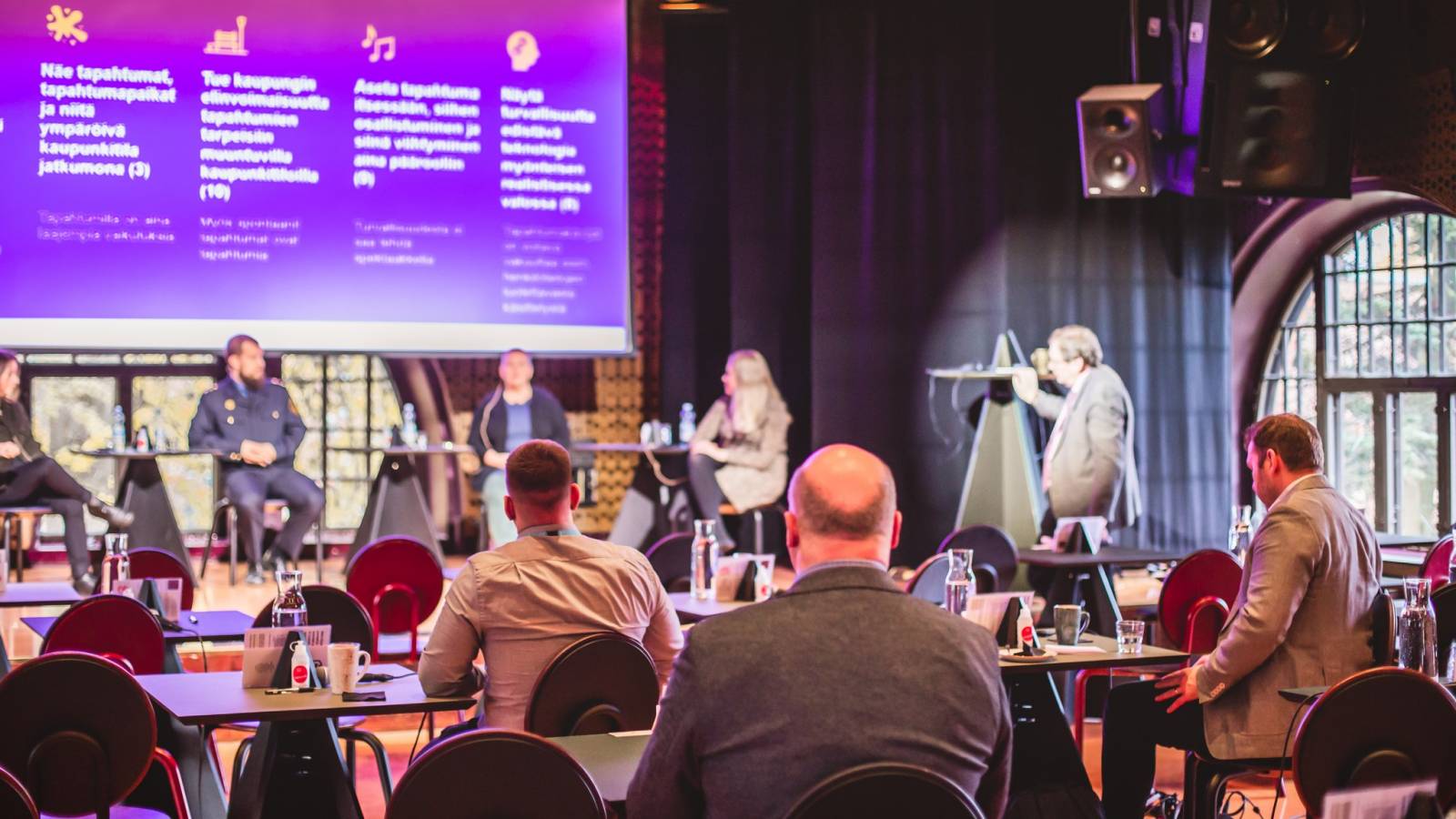An exceptional year of events is coming to an end and safety has been topical in a way that we could not have expected while starting with the SURE project. Traditionally, security has been a difficult issue for event organizers. People come to enjoy and relax in events, so too blunt or visible security measures or security messages may promote unwanted feelings of insecurity: security talk gets easily deconstructed into a feeling of insecurity. Thus, even the emergency authorities have been reserved with the prominent display of security. However, year 2020 with COVID-19 made it more natural to discuss security and its vital role to the events.
The interplay of ambience and safety was discussed at a recent SURE project event. The event brought together around 50 participants at the G Livelab Tampere premises and online. Our team at the Tampere University presented project results achieved during 2020, especially the co-development process with the authorities, event actors and other stakeholders. After this, a panel of experts in the field of security and events discussed the guidelines formulated for the development of a safe Tampere Event City.
COVID-19: Should security be made a spectacle?
The guidelines emphasize the key social, technological and socio-technical elements of planning safe and secure event cities. One of our guidelines rose above the others in the debate, as the time with COVID-19 has reversed the traditional idea of the relationship between enjoyment and safety. Nowadays safety is worth making a spectacle: it’s the basis for enjoying the event.
According to Annamaija Saarela, CEO of G Livelab Tampere, a lot of good lessons have been learned from experiences with COVID-19 in planning and organizing safe spaces. For example, the public safety instructions and announcements presented at the events may now constitute a ‘new normal’. At the same time, new security threats have expanded our understanding and ways of communication about sustainable events. It is conceivable that these changes are laying the groundwork for an entirely new kind of safety culture.
The behavior of the public may also have changed (permanently): if people prefer smaller events, there can be a lot of opportunities not only for event organizers but also for the vitality of the city, Saarela continues. On the other hand, events scattered around the city challenge the means of traditional security planning and create new demands for cooperation between event organizers and security authorities.
Cooperation beyond boundaries: tackling the grey zones
Large events in particular have ripple effects. They “spill out” of their original venues with both positive and negative side effects in different parts of the city. The increase in the scope and magnitude of the event will also increase the number of actors affected. At the same time, siloed practices and possible problems in the division of labor between the public and private actors responsible for the various dimensions of urban safety are easily raised.
Although event organizers work to ensure safe events in cooperation with the authorities and various city administrators, the panelists identified “grey areas”, where the division of responsibilities between actors remain unclear. Who is responsible for managing congestion or disturbances outside of events? Tiina Kuusisto, Executive Director of Tampere Region Festivals, called for better joint operating models for planning and risk management between the event industry and the authorities.
The definition of the near-by area of events varies greatly from situation to situation. For this reason, it is sometimes difficult to set a clear sphere of responsibility, for example with regard to public order and security, confirms Perttu Mukkala, Fire Protection Engineer at the Tampere Region Rescue Department.
Building blocks for the sense of security and safety
Considering safety in wider urban development also serves the needs of events. Planning Manager Mikko Allinniemi from Tampereen tilapalvelut, an entity responsible for construction and maintenance services for the City of Tampere, acknowledges the “classic virtues” of beauty, durability and practicality in the planning of today’s spaces and events as well.
However, a city is not a city without people. Crowds can be a source of safety or a threat, depending on the occasion. With safety as well as insecurity being very personal feelings, it may not even matter if the risk is real or not. Matilda Salminen, Event Producer of the City of Tampere, aptly summed up that unsafety often intensifies in a group.
Open urban space is in principle flexible and provides a framework for a wide range of events and activities that draw the audience to the venue. Public space is used in different ways in different situations, and the code of appropriate behavior also varies from time to time: what is acceptable, spontaneous and carnivalistic show of joy at the Tampere central square during the ice hockey championships may not be desirable on a normal weekday evening.
However, a safe and vibrant event city needs to accommodate a wide range of uses for the urban space. The solutions in the SURE project aim to foster ambience and safety both in the events and their surrounding urban space. Many of the security systems that SURE works with are technological. However, it should be noted that a well-placed park bench can also be a significant safety act.
Iina Sankala & Ilari Karppi, Tampere University

